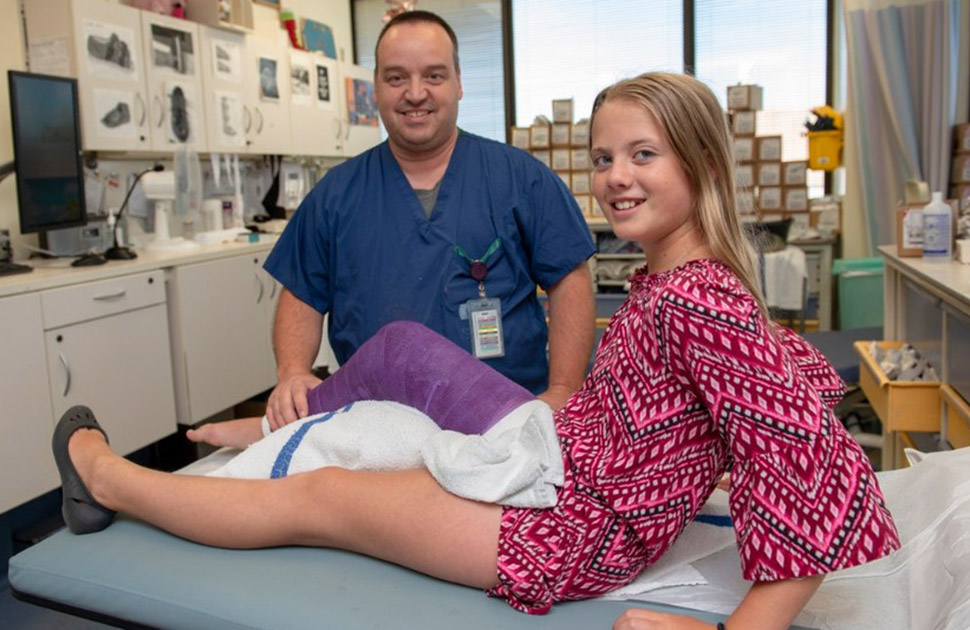COVID Intersection With Childhood Health Issues
"They're needing much more resuscitation and care than they should.""I personally have seen some very sick diabetics.""I hope parents aren't afraid to get their kids care or at least seek out help if they think their kids are sick."Dr.Kevin Chan, chair, acute care committee, Canadian Paediatric Society / Hospital for Sick Children, Toronto

"Because they [children under novel coronavirus lock-down] are not coming into contact with as many people, typical viruses aren't spreading."Dr.Bruce Wright, divisional director, Stollery Children's Hospital, Edmonton
During this time of national and international chaos over best-avoidance practices of contracting the voracious virus leading to COVID-19, hospital emergency departments have gone into overdrive in preparation for a massive surge of people struck down by COVID's most extreme symptoms. Respirators, breathing machines, personal protective equipment for health-care providers, ICU beds have had to be assembled, doctors alert to practising care for people presenting with acute respiratory syndrome, and hospital beds being cleared of patients, while elective surgeries have been cancelled.
People who would once have gone to hospital emergencies for injuries and sudden illness, no longer do, for fear of contracting the contagious virus, or mindful that the focus at hospitals has been overtaken with a panic over whether they can manage the expected number of cases of extremely sick people. With the impression that whatever has befallen them, they can make do on their own rather than attend a hospital, doubled by the concern that hospitals are now seeping with viral droppings, people have stayed away.
That includes people whose sudden appearance of symptoms of stroke, appendicitis or heart attack have decided to set aside any thoughts of entering a hospital emergency room at a time when family physicians no longer see their patients in person, or those who suffer serious accidents deciding to wait out their pain for home recovery. And it also includes children whose parents are loathe to take them to hospital, weighing whatever their symptoms are against the potential of a child contracting COVID-19 in a hospital setting.
 |
Leaving doctors who man the emergency barricades at the nation's specialized children's hospitals scratching their heads in wonder and concern. That parents, fearing the virus could be keeping their children away from hospitals. A dramatic drop in emergency room visits has struck pediatricians across Canada, with some hospitals reporting that when parents do eventually bring their children around, whatever symptoms they had were by then well advanced.
Visits to the Hospital for Sick Children in Toronto for example have fallen by an estimated two-thirds since the global pandemic saw Canada infiltrated by the dread disease. In Ottawa, the Children's Hospital of Eastern Ontario has seen a 70 percent drop in new cases of diabetes in 30 days alone. And when children do appear at the emergency room they're sicker than doctors typically are accustomed to seeing.
Equally distressing is that child cancer patients are entering the hospitals' emergency departments to be seen, diagnosed and treated only after a prolonged period, when they've experienced symptoms for a longer period than should occur under other circumstances. Parents are struck with indecision whether the symptoms they're faced with in their children are merely transient and unimportant or signal something far more immediate and dangerous.

To the present, less than five percent of total cases of COVID-19 have been detected in children up to 19 years of age. Children are less likely to contract a serious case of the virus they're contracting in much smaller numbers than the general public, and researchers remain uncertain what role children have in the transmission of the virus. The general consensus, however, is that they may be carriers, passing the virus to older people at greater risk of complications.
For their part, hospitals take extreme precautions in an effort to prevent the occurrence of infections. Patients are carefully screened on entry, and those patients who might be harbouring infections are placed away from known non-infectious children. Dr.Wright, of Edmonton's Stollery Children's Hospital credits a relative absence of children at his hospital to the emergency public health measures to prevent COVID spread.
With schools cancelled, along with organized sports, the colds and flu typically that spread through schools and daycare centres winter-long have not appeared in the numbers usually anticipated, with less physical contact among children. With sports no longer high on children's agenda for the time being, injuries related to sports have diminished. Still, doctors are anxious to convey the message to uncertain parents that the emergency rooms are there for a distinct purpose, and no parent should hesitate to take their child there for quick attention when needed.
 |
| The emergency waiting room at Sainte-Justine Hospital is shown on Thursday, January 16, 2020 in Montreal. Paediatricians across the country say far fewer parents are seeking emergency care for their children, likely over concerns about putting their kids in contact with COVID-19.THE CANADIAN PRESS/Ryan Remiorz |
Labels: Children, Hospital Emergency Rooms, Novel Coronavirus, Paediatrics

0 Comments:
Post a Comment
<< Home